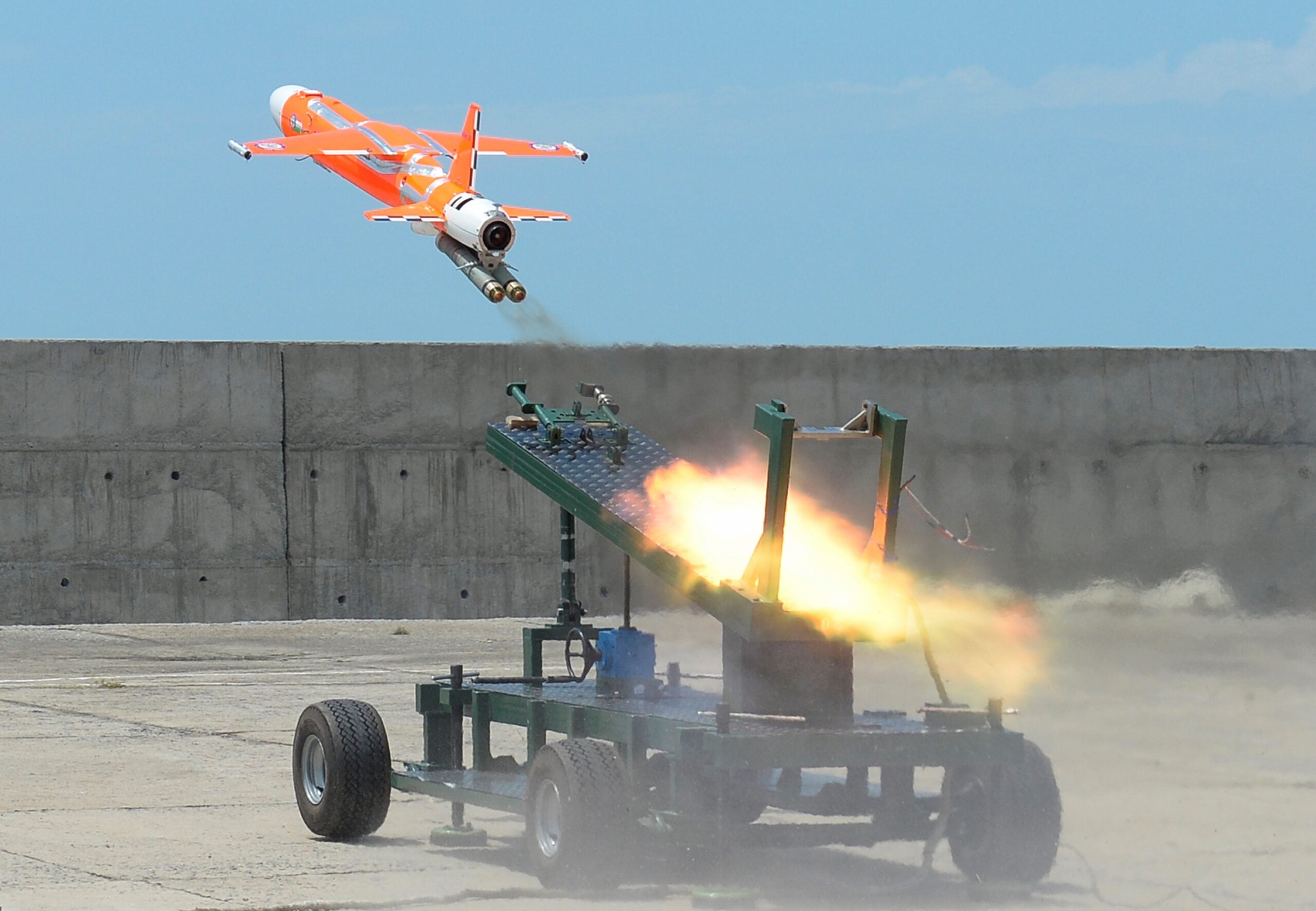
India’s Defence Research and Development Organisation (DRDO) completed trials on an improved booster configuration for the High Speed Expendable Aerial Target (Heat), Abhyas, announced the Department of Defence (FoD) on 27 June 2024.
Details of the new booster design were not disclosed, but as recently as October 2021 the Abhyas, which is programmed for fully autonomous flight, launched using a twin underslung booster.
Six successful consecutive developmental trials were completed, with the Abhyas trialled under observation from an improved radar cross section, visual and infrared segmentation system. The Heat system contains a Luneburg lens in the nose cone that can enhance the target’s radar cross-section for weapons practice.
The Chairman of the DRDO, Dr Samir V Kaman – who also serves as the Secretary of Research and Design for the DoD – congratulated the success and said “The system is cost effective with huge export potential.”
India’s Minister of Defence Rajanth Singh complimented the work of industry, the services and the DRDO for the development of Abhyas: “The successful tests are noteworthy testimony of synergy between scientists and industry.”
Two of the trials were launched back-to-back in 30 minutes, to demonstrate low logistics burden and ease of operation. The mission objectives of the full set of trials included safe booster release, launch clearance, and endurance tests.
How well do you really know your competitors?
Access the most comprehensive Company Profiles on the market, powered by GlobalData. Save hours of research. Gain competitive edge.

Thank you!
Your download email will arrive shortly
Not ready to buy yet? Download a free sample
We are confident about the unique quality of our Company Profiles. However, we want you to make the most beneficial decision for your business, so we offer a free sample that you can download by submitting the below form
By GlobalDataDRDO conducted the first experimental launch of the system in 2012, with Rs150m ($1.8m) in initial funding from the Indian Government for the project, with a per unit cost of Rs4m ($48,000).
As a HEAT, the Abhyas is intended to offer a realistic threat scenario for weapon systems practice. Under operation from an autopilot and a laptop-based ground control system. The ground control system enables aircraft integration, allows for autonomous flight, and performs pre-flight checks. The autopilot system can support live-fire weapons tests.
The vehicle is equipped with a small gas turbine engine and leverages MEMS-based inertial navigation system to navigate and the Flight Control Computer for guidance and control.
While the Abhyas is expendable, it does contain a data recorder for post-flight analysis. In addition, Abhyas is equipped with an acoustic miss distance indicator that allows users to find out how much a missile missed its target by.
The Abhyas system was designed by DRDO’s Aeronautical Development Establishment in Bengaluru in collaboration with Hindustan Aeronautics Limited, Larsen, and Toubro. The new booster design was designed by Advanced Systems Laboratory, and the navigation system came from the Research Centre Imarat.



